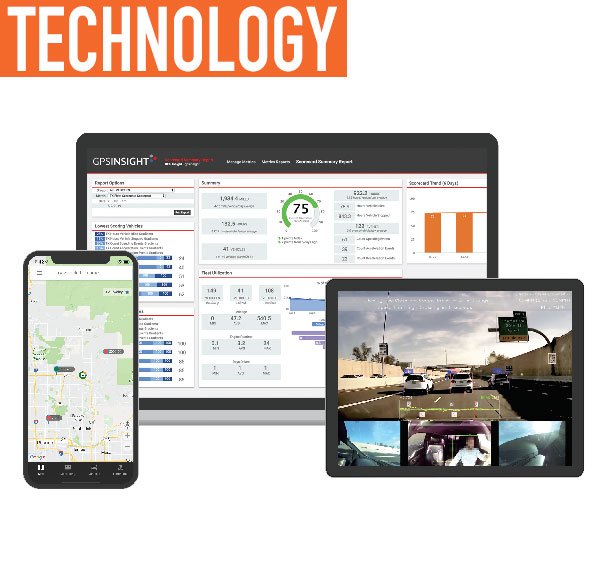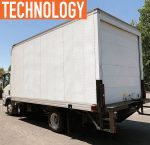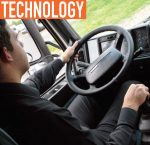By Ryan Driscoll
Traditionally, paying predictive measures on an enterprise-level means commercial fleet companies and their drivers are in a one-size-fits-all insurance plan no matter their background, qualification, or accident record. In Q1 2019, commercial auto insurance renewal rates had already increased 4.53%—almost reaching the 6 to 12% increase originally predicted for the entire year, according to Business Insurance. Thankfully for large commercial fleets, next-gen technology has introduced an alternative. Automotive usage-based insurance (UBI) plans give insurers the ability to accurately quote costs based on driver behavior and accident probability, cutting insurance costs for employers with “good” drivers.
For fleet companies with positive track records and the ability to continuously back them up, UBI plans are an ideal option for cutting insurance costs; the better you drive, the less you pay. Companies are taking note, and from its current 65.1 million policyholders, via Reportlinker, the automotive usage-based insurance market is only expected to grow in the coming years.
As the market develops, technology advances, and more telematics offerings become available (such as the use of IoT and fleet cameras), how exactly will it benefit insurers, fleet owners, and society? Here are a few ways:
FLEET OWNERS
Accident rates for commercial fleets are approximately 20%, costing employers nearly $70,000 annually, according to GPS Insight. Not only do accidents incur costly vehicle repair and increased insurance rates, claims and lawsuits against carriers are also a possibility. If not careful, fleet managers and owners can find themselves buried in negligent entrustment fees and liability. This is where telematics can make the difference, capturing and analyzing every minute on the road and showing an overall view of driver behavior, providing evidence on who is responsible when incidents occur (driver vs third party). This captured data settles responsibility and saves insurers and insured parties possibly large amounts of money. Companies with available data to present in such a circumstance further incentivizes insurers to provide lower rates.
Internally, AI-driven analysis of driver behavior allows fleet owners and insurers to see the situation in which “dangerous” behavior occurred, putting sentiment behind the action. For example, a sharp swerve by a driver initiated to avoid an obstruction in the road and prevent an accident can be rewarded with lower rates instead of what would have previously been a penalization. This inside-out visibility incentivizes both employers and insurers to support their drivers and cut costs effectively.
INSURERS
For all involved parties, evaluating risk and preventing accidents is top priority. For insurers, it determines if providing a company discounted premiums through UBI plans are going to pay off. This confidence comes from the ability to evaluate—and continue to assess—driver risk and behavior. In-depth telematics enables insurance providers to track vehicle health and assess a driver’s behavior, evaluate risk, and develop customized UBI policies based on various insights, all while maintaining peace of mind.
Advanced telematics with fleet dash cam capabilities capture data and provide a wide range of circumstances that separate a good driver from a bad driver. Such circumstances include hard braking, driver drowsiness, tailgating, traffic signal violations, etc. Additionally, video capture gives fleet owners and managers an opportunity to train and enhance driver safety based on current behaviors. With active training policies in place, insurers can rest easy knowing proactive steps are taken to eliminate risk.
SOCIETY
Beyond good business sense, data gathered on driver behavior and condition allows employers to record incidents, intervene in unsafe driving conditions, and train their employees to practice safer habits, which protects everyone on the road. Employees who are aware of their driving behavior are more attentive and prepared when behind the wheel, lessening the risk of accidents. Coming full circle, a safety culture surrounding a fleet monitored by telematics is then rewarded with lower insurance premiums.
As technology continues to infiltrate the auto industry, new products and services that embrace IoT and telematics have led to a revolutionized insurance offering. UBI policies are rapidly gaining popularity among fleets, and according to research from Global Market Insights, Inc., the usage-based insurance market is projected to grow more than 17% by 2024. Therein lies the goal: UBI plans harness the power of telematics to establish mutually beneficial partnerships between companies and insurance carriers and promote a community-wide safety culture.
About the author:
Ryan Driscoll, VP of marketing, has been with GPS Insight since 2009. Driscoll built the company’s marketing program from the ground up. In his role, he is responsible for overseeing the management of GPS Insight’s brand, creating market awareness and advocacy and driving customer preference for the brand through all channels. He works diligently to be a trusted resource for thought leadership in the areas of GPS technology and fleet management. He is a graduate of Arizona State University, where he received a Bachelor of Science in marketing.




